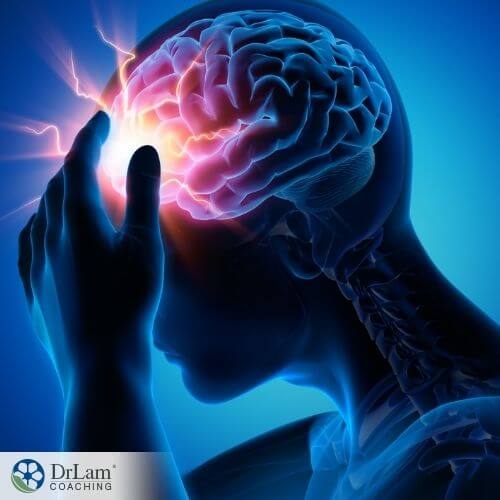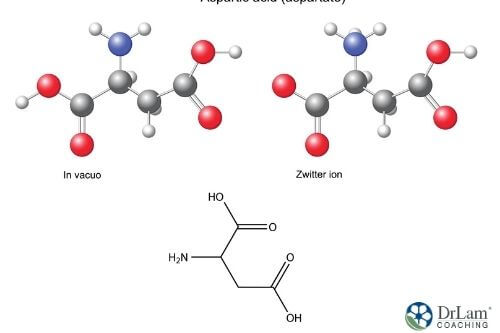
Electromagnetic fields (EMFs) are everywhere. Some are natural, such as those emitted by the sun, the earth, and our own cells. Others are manmade, such as those produced by wireless connections, computers, cell phones, TVs, radios, microwaves, and other devices. And each time one of these new devices comes out, there is some general worry that it might end up causing harm to people’s health. For example, some people are concerned about the new 5G technology. But so far, most studies show they’re quite safe. Yet, it is undeniable that many people report having electromagnetic hypersensitivity.
Electromagnetic hypersensitivity syndrome (EHS) is a condition that we hear about often from our adrenal fatigue clients. And, just like Adrenal Fatigue Syndrome (AFS), it is not yet recognized by the mainstream medical community.
This article discusses what it is, the physiological mechanisms that may be behind it, and what you can do to feel better.
» Read our complete long-read article on electromagnetic hypersensitivity and Adrenal Fatigue
» Adrenal Fatigue FAQs
» Take our 3-minute test to see if you may have Adrenal Fatigue
Reported symptoms of EHS include:
While mainstream medicine has yet to accept that these symptoms are due to EHS, most doctors can attest that the symptoms themselves are quite real. They are even debilitating for many.
However, at the same time, scientific studies have found no significant links so far to explain these symptoms.
In some cases, it may be that some symptoms developed due to other causes that the patient wasn’t aware of – such as mold toxicity, environmental toxins, psychiatric issues, food or drug intolerances, sleep problems induced by overuse of screens prior to bed, and pre-existing chronic conditions.
But, in other cases, they have found no other underlying cause for the symptoms. That’s why EMF hypersensitivity is sometimes referred to as idiopathic environmental intolerance attributed to electromagnetic fields. Idiopathic means there's no known cause.
Some areas of the world have taken this possibility more seriously than others. Many countries across Europe, for example, have established organizations that advocate for EHS patients and try to create public spaces free of manmade EMFs as much as possible. Still, there is a wide divide between what the science says and what patients report, and we need to address both.
The reason it's important to give you an overview of the science against the existence of the condition is not to invalidate your experience or symptoms nor to deter you from seeking help and a good recovery plan. It’s in order for you to have the full picture and to prepare yourself for what your health professionals may tell you.
 First of all, there is not yet enough information about how EMFs can cause such symptoms. No one really understands the underlying mechanisms that may be at the root of the problem. We will outline some possible mechanisms below, but please keep in mind that they are not yet fully researched or validated.
First of all, there is not yet enough information about how EMFs can cause such symptoms. No one really understands the underlying mechanisms that may be at the root of the problem. We will outline some possible mechanisms below, but please keep in mind that they are not yet fully researched or validated.
Secondly, different studies on electromagnetic hypersensitivity have given different results. For example, some of the ones that did find links between EMF exposure and symptoms had certain limitations. Some did not screen the study participants for pre-existing conditions that may be the cause of the symptoms. Some didn't employ proper statistical analyses.
Thirdly, studies conducted to compare patients with healthy controls showed that patients who believe they have EMF hypersensitivity are not much better at telling when they’ve been exposed to EMFs than control groups were.
And, finally, some studies checked whether patients who believe they suffer from this condition could tell when they are exposed to real or sham EMFs. What they found was that the patients reported experiencing symptoms when they believed the EMFs were real, even when they were fake. This means that it’s possible the symptoms are due to the nocebo effect. The nocebo effect is the opposite of placebo, when the negative expectations of exposure lead to worse effects than if there were no expectations.
But like with many syndromes and conditions, we need more studies conducted before electromagnetic hypersensitivity is accepted as real. This is what happened with Chronic Fatigue Syndrome many years ago. More and more patients started to complain about this condition until the mainstream medical community had to take it seriously. We also believe this will soon happen with AFS as well.
Your cells are made up of electromagnetic energy. Your whole body is a conductor of electricity. That means it’s possible that external electric and magnetic activity can influence your body’s cells. Indeed, the voltage changes across plasma membranes is one of the major ways cells like neurons communicate with each other. It’s a form of signaling that can activate an entire cascade of electrical and chemical changes in different physiological functions.
The rationale behind the safety of manmade EMFs is that, because they are made up of very low-energy photons, they can’t have a big enough effect on your biochemistry. But, perhaps, one of the exceptions to this is if your body is in an already fragile state. This could be due to previous EMF exposure, detoxification issues, chronic stress, chronic inflammation, or some other condition. When you are already in a weak state, you may be more sensitive to EMF effects than other people. Some people also feel they are naturally more sensitive to them, without having another condition that makes them that way.
One of the biggest concerns people have had over the years with regards to cell phone usage and other sources of EMFs is how they might affect the brain. And although there have been no links with conditions such as brain cancer, there are some researchers that believe they can still affect certain neurological functions. The first of these is the functioning of your pineal gland.
 The pineal gland is actually an endocrine gland that is situated in the brain. It is responsible for modulating certain hormones, such as melatonin. Melatonin is your master sleep hormone. And along with cortisol, which is your body’s main anti-stress hormone, it regulates your sleep-awake cycles.
The pineal gland is actually an endocrine gland that is situated in the brain. It is responsible for modulating certain hormones, such as melatonin. Melatonin is your master sleep hormone. And along with cortisol, which is your body’s main anti-stress hormone, it regulates your sleep-awake cycles.
If your pineal gland is under constant EMF exposure, it can start to dysregulate. This may then reduce your melatonin levels and increase your cortisol levels. This means you won’t be able to sleep very well. And, indeed, one of the symptoms of electromagnetic hypersensitivity, as well as AFS, is issues with sleep. Poor sleep stresses the body and makes you even more vulnerable to inflammation.
Inflammation is mostly handled by your body's Inflammation Circuit, and this is the set of systems most involved in electromagnetic hypersensitivity. Understanding how this system is activated by other issues, along with EMFs, is thus important. We'll discuss this system more below.
Your eyes help your body tell if it’s daytime or nighttime. That information is passed onto your suprachiasmatic nucleus (SCN), situated also in the brain. You can think of your SCN as the coordinator of your body’s biological clock and circadian rhythm.
If EMFs are affecting your eyes, they may indirectly also affect your SCN. If your SCN is thrown off balance, you could start to suffer from circadian rhythm dysfunction as well. This can have serious effects on your metabolism, your sleep, your fertility, and many other physical functions.
One thing that may improve this issue is implementing really good sleep hygiene practices. This means keeping your room cool and dark, not using any screens at least two hours before bed, not turning on the light if you need to use the toilet at night, and trying to go to bed at the same time every night. You could also consider taking a melatonin supplement.
Electromagnetic waves may lead to excess vibration in your cells and extracellular matrix (ECM), which is the scaffolding made up of different proteins that hold your cells together. The ECM is also the network of “highways” that allows substances to travel to and from cells to different organs. It’s actually one of the components of your body's Detoxification Circuit, which is very closely linked to the Inflammation Circuit.
Excess cellular vibration can lead to muscle tension and increased stress levels. And excess vibrations in the ECM can lead to congestion and a slowed clearing rate. Congestion in any part of your Detoxification Circuit causes a build-up of toxicity, which can then aggravate any inflammation you have. Your Inflammation Circuit needs a strong and timely detoxification process in order to function properly.
This means doing a temporary detox might be a good idea here. But it needs to be individualized and very gentle, especially if you have AFS. Overly aggressive detox plans can dump toxins in your body that it can't clear. Certain herbs and adaptogens might also help, as will a specific diet and lifestyle plan.
In addition, the increased tension and stress levels induced by excess cellular vibrations puts extra pressure on your adrenals, which can then either trigger or aggravate adrenal fatigue. As the adrenals weaken and inflammation increases, so too does electromagnetic sensitivity.
One of the leading researchers on the effects of EMFs on health, Martin L. Pall, also looked into some of the possible mechanisms that might underly chronic fatigue syndrome. This mechanism may give us some clues on what may be behind electromagnetic hypersensitivity. It’s something called the NO/ONOO- cycle. NO stands for nitric oxide, and ONOO- stands for peroxynitrite.
 How it works is that, when N-methyl-D-aspartate (NMDA) receptors on cell membranes are activated, they open up the calcium channels on these cell membranes. And glutamate, an excitatory neurotransmitter, is what binds to these NMDA receptors to activate them.
How it works is that, when N-methyl-D-aspartate (NMDA) receptors on cell membranes are activated, they open up the calcium channels on these cell membranes. And glutamate, an excitatory neurotransmitter, is what binds to these NMDA receptors to activate them.
When the calcium channels are open, a huge amount of calcium rushes into the cells. Calcium is one of the charged ions that can change the voltage between the outside and the inside of a cell. We’re mainly talking about neurons here. Then, when the charge across a neuronal membrane changes, the cell can reach a specific threshold for firing a signal. The signal then helps the cells communicate with each other, each one exciting the next one, until the message reaches its destination.
The entry of calcium also activates endothelial nitric oxide synthase (eNOS) and neuronal nitric oxide synthase (nNOS). These then increase NO levels, which then react with superoxide to create ONOO-.
This NO/ONOO- cycle is involved in different health issues, including heart disease and tinnitus, as examples. Depending on where it happens, this cycle will increase inflammation in that part of the body.
Inflammation, left unaddressed, can travel all over the body and wreak havoc. In fact, chronic inflammation is one of the root causes of AFS and almost all chronic conditions. One way of tracking how symptoms in one area cause problems in another is through the NeuroEndoMetabolic (NEM) model.
The NeuroEndoMetabolic (NEM) Stress Response is your body's global response to stress. It describes how a system of six circuits, made up of three organs and systems each, work together to fight stress. The Inflammation and Detoxification circuits play an especially big role in electromagnetic hypersensitivity.
Your Inflammation Circuit is the circuit most involved in any kind of sensitivity, whether food, drug, chemical, or electromagnetic. It’s composed of your gut, microbiome, and immune system. All these systems are closely interconnected in causing and resolving health issues.
This means that improving your gut and microbiome health is also essential in fighting inflammation, such as through eating a more nourishing diet that includes probiotics.
Your adrenals produce cortisol, and its levels fluctuate naturally throughout the day. But when you're facing chronic stress, your adrenals have to overwork to produce more and more cortisol. This is what then triggers Adrenal Fatigue Syndrome, or AFS.
Cortisol has a close relationship with inflammation. In fact, one of its main jobs is to neutralize inflammation. But too much cortisol, as happens in the beginning stages of AFS, can actually increase inflammation. And when cortisol levels drop too low, as happens in advanced AFS, inflammation can be allowed to run uncontrolled in the body.
 Symptoms of AFS include fatigue, sleep issues, weight gain, brain fog, anxiety, mild depression, hair loss, PMS, heart palpitations, gastrointestinal disorders, food and drug sensitivities, lowered immunity, hypoglycemia, blood pressure instability, and an inability to handle stress.
Symptoms of AFS include fatigue, sleep issues, weight gain, brain fog, anxiety, mild depression, hair loss, PMS, heart palpitations, gastrointestinal disorders, food and drug sensitivities, lowered immunity, hypoglycemia, blood pressure instability, and an inability to handle stress.
As you can see, many of these symptoms also show up in electromagnetic hypersensitivity. And it is possible that EMF exposure and inflammation could be connected to AFS. Either through a system already weakened by AFS and inflammation becoming increasingly sensitive to EMFs, or through a body stressed by EMFs developing inflammation and eventually reaching the point of adrenal fatigue. Both can trigger or worsen the other. It’s sometimes difficult to tell which came first.
Either way, once the Inflammation Circuit is engaged, it becomes more and more vulnerable to dysregulation. Dysregulation of your Inflammation Circuit can lead to many issues. One of the most common, yet least recognized, is dysbiosis – the imbalance of your gut’s microbiome. Gastrointestinal issues and problems with your immune system can also result. When your immune system dysregulates, you may end up with lowered immunity or autoimmunity.
As inflammation becomes more severe, it can spread from the area it originated, perhaps where the NO/ONOO- cycle began, for example. If it spreads to your skin, it can cause skin rashes. Inflammation that reaches your brain and nervous system can cause neurological and psychiatric symptoms, such as anxiety, panic attacks, sleep problems, and brain fog. If inflammation spreads throughout your gastrointestinal tract, you can get nausea, IBD, and leaky gut syndrome. You can also end up with food sensitivities you didn’t have before, recurring infections, SIBO, and IBS.
The first thing is to conduct a process of elimination. You need to check whether you really may be suffering from another condition that is causing these symptoms that you may not know you have. Some possible conditions to look at are chronic fatigue syndrome, metabolic issues, thyroid problems, stealth viruses like Lyme disease and Epstein-Barr, and psychiatric conditions, like major depressive disorder. AFS and NEM dysregulation are other possible issues.
You may also want to check if there is something in your environment other than EMFs that may be the culprit. This could include toxins, mold, air pollution, bad lighting, and noise pollution. Then, do what you can to reduce or remove these problems.
Next, you need to check what lifestyle factors may be contributing to increased inflammation and other symptoms. These factors can include poor quality sleep, a sedentary lifestyle, food and drug sensitivities, overconsumption of alcohol, an unhealthy diet, nutrient deficiencies, and psychological pressure.
Once you’ve ruled out other possible conditions and sources of symptoms, you’ll be closer to knowing what you're dealing with.
Your next step is to reduce EMF exposure. There are many resources online with tips and tricks on how to do that. But the gist of it is to use cable internet when possible, turn off any wireless devices when not using them, and use shielding blankets on your body and in your house. These are blankets are made with copper and other substances that reduce or block EMFs.
» Read our complete long-read article on electromagnetic hypersensitivity and Adrenal Fatigue
» Adrenal Fatigue FAQs
» Take our 3-minute test to see if you may have Adrenal Fatigue
 Whether electromagnetic hypersensitivity is real is a topic of debate in the scientific and medical communities. But whatever the case may be, the symptoms are real. Real people are suffering daily from something causing these symptoms, and we would not completely rule out EMF exposure as a possible cause.
Whether electromagnetic hypersensitivity is real is a topic of debate in the scientific and medical communities. But whatever the case may be, the symptoms are real. Real people are suffering daily from something causing these symptoms, and we would not completely rule out EMF exposure as a possible cause.
We also recommend you look at the possible role of AFS and NEM dysregulation. These are very common conditions that can be causing some of your symptoms, whether they were triggered by EMFs or other stressors.
Steps to address AFS and inflammation include eating an adrenal fatigue diet, taking certain supplements, doing gentle forms of exercise, implementing good sleep hygiene practices, and managing your stress levels. Then, you can add some very gentle detoxification, as well as grounding practices and EMF reducing techniques. The good thing about this approach is that it will help with many different root problems. It is all about strengthening your adrenals, lowering your inflammation levels, and balancing out your stress response.
But whatever you choose to do, please don’t do it alone. You need guidance to ensure you don’t retoxify your system, get paradoxical reactions, or inadvertently worsen your adrenal fatigue or EHS symptoms. Make sure you talk to a trusted health professional about your plans and concerns.
Electromagnetic hypersensitivity is a big topic of debate. Some people swear that it is real and debilitating, while scientific studies have yet to validate its existence. What is not up for debate is the seriousness of its symptoms. So it’s time to look for its causes and a solution.